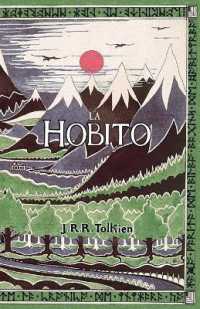Full Description
Traditionally, reading and writing are believed to be separate but related language processes and teachers follow the conventional wisdom of teaching in-depth reading, with writing as a tag-on issue. Therefore, there exists an increasingly urgent call for a well-rounded reading-writing curriculum and a theoretically-informed, empirically-based, student-centered advanced textbook that aims to develop the synergy between reading and writing. Reading to Write: A Textbook of Advanced Chinese is intended to fill this significant gap. It treats reading and writing as integrative parts and interactive skills in Chinese language teaching, putting them hand-in-hand, supplementing each other.
Contents
AcknowledgmentsPreface User's guide 1. Writing about events, part one Writing guide : key elements of event writing Model text : an amusing account of exam preparations Rhetoric : personification Practical writing : email 2. Writing about events: part two Writing guide : detailed descriptions Model text : a tune in the rain Rhetoric : metaphors and similes Practical writing : congratulatory words 3. Writing about people Writing guide : capturing key traits Model text : mother's smiles Rhetoric : parallelism Practical writing : letter of gratitude 4. Writing about scenery, part one Writing guide : careful observations Model text : impressions of Niagara Falls Rhetoric : exaggeration Practical writing : posters 5. Writing about scenery, part two Writing guide : blending scenery and feelings Model text : autumn colors on campus Rhetoric : association Practical writing : cover letter for a job application 6. Writing about feelings Writing guide : true feelings and beautiful expressions Model text : musical charm Rhetoric : imagination Practical writing : resume 7. Persuasive writing Writing guide : three methods of argumentation Model text : confidence and conceit Rhetoric : rhetorical question Practical writing : reader response AppendicesEnglish translations of the model texts Vocabulary index






